Most folks who know me know I love old cars and old airplanes; today I got up-close-and-personal with a classic French car, the Citroën 2CV. Last Saturday night we had a wonderful dinner; one couple there own a Citroën Deux-Chevaux and when I mentioned how much I enjoy 2CV’s Helen asked if I’d like to see hers and go for a ride. Well, of course I would!
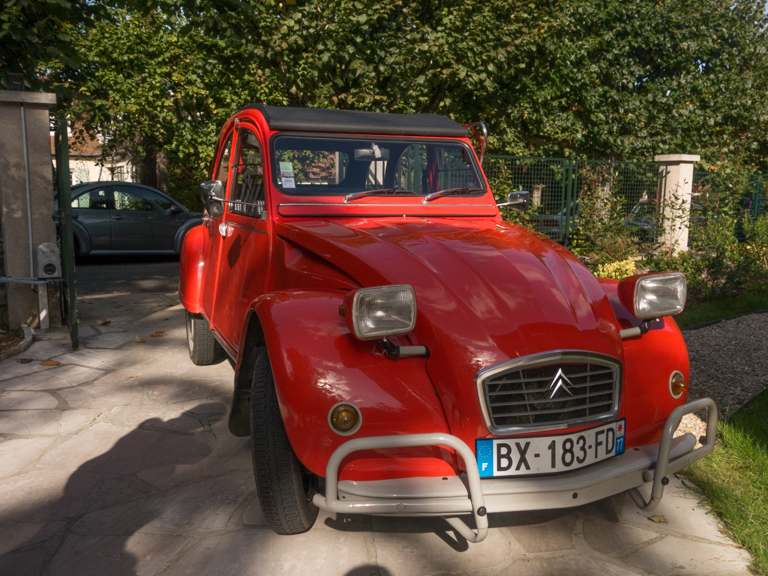
Helen’s 2CV. It’s a 1978, beautifully maintained. Honestly, this car didn’t look so good the day it came out of the factory.
A little 2CV history: the “Deuche,” as it’s affectionately known, was thought up by the head of the Michelin Tyre Company in the 1930s and when Michelin bought the bankrupt Citroën Automobile Company, the car became a reality…almost. With great fanfare (and after over 250 different prototypes were built to test different designs), the car was announced in 1939. The next day, France declared war on Germany and World War II started. Production was, quite understandably, postponed.
The first real production 2CV rolled out of the factory in 1948. What does the “2CV” name mean: “deux-chevaux,” – two horsepower -, of course; the output of the 2CV’s two-cylinder engine. Now that two horsepower rating was by a different standard than American cars; by American standards, the engine produced a whopping 9 horsepower.
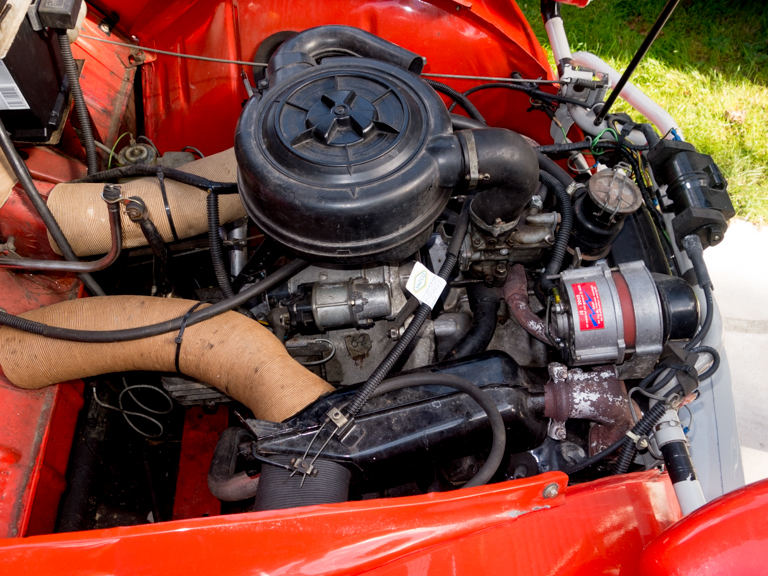
The 2Cv’s engine. In fact, the 2CV’s engine and transmission, all in a package about 18 inches long. By the time this car was built, output was up to 33 horsepower by American measurement standards.
The design philosophy was pure minimalist: the goal was to keep the car simple, light, easy to maintain, and cheap.
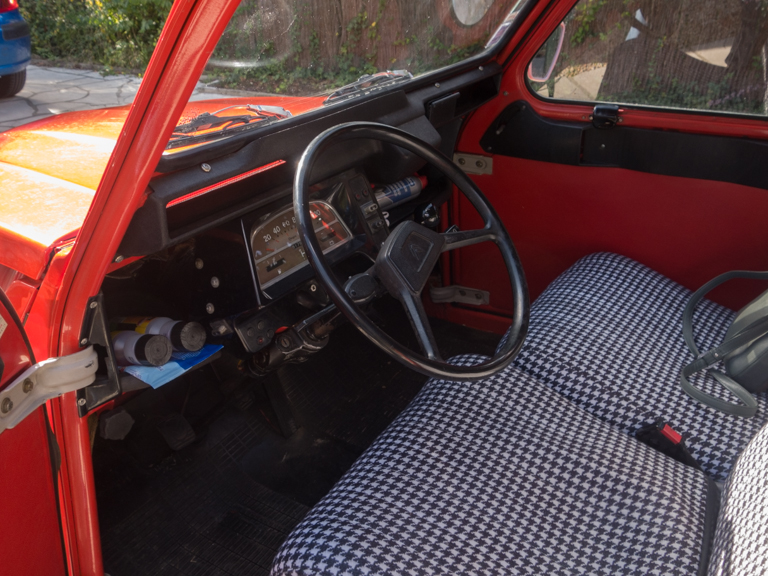
Simple: steering wheel check; gearshift, check; seats, check. Other options, nope. This car has nice checked seat-covers; the original 2CV had a canvas sling seat, like a beach chair.
After a good walk-around, we were off. 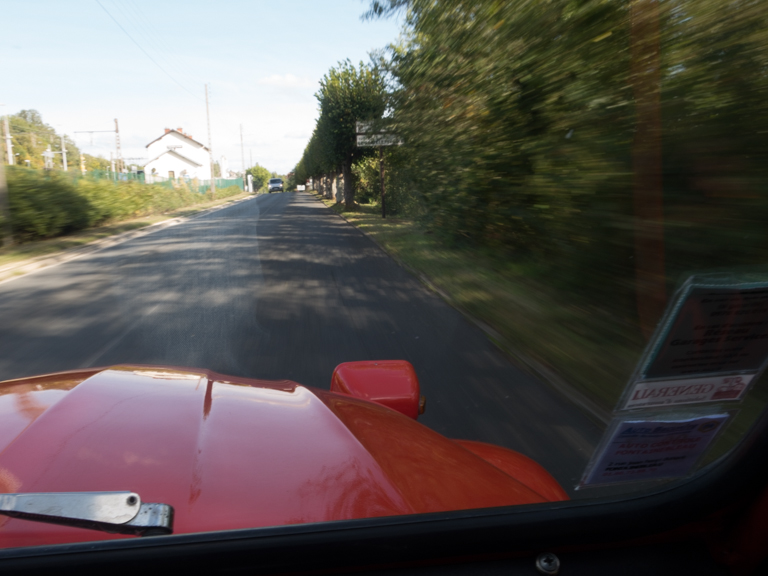
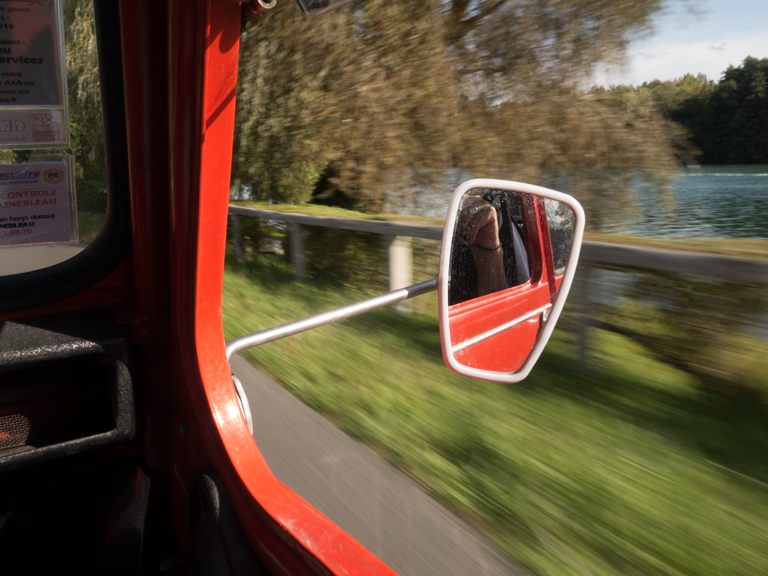
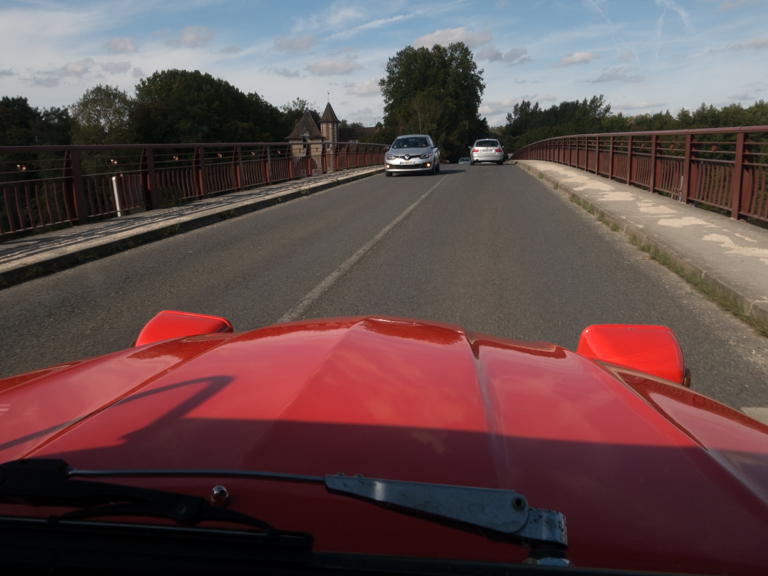
I gotta tell you, this car is noisy. My old MGs were whisper-quiet compared. But geeze this was fun! I couldn’t stop grinning: we were in real piece of French automobile history.
Believe it or not, this car was an sales immediate success with the French. Within two years, there was a five-year waiting list to buy one. And also believe it or not, its success continued: the Deuche holds the record for longest-produced car. It was built in France from 1948 to 1987: 39 years! (It was built in Portugal for another two years, adding to its longevity record.)
Putting her life in my hands, Helen asked if I wanted to drive. Well, of course I wanted to drive. I’m not sure Laurie, riding in the back, was so sure about this, but off we went. Neck-snapping acceleration was not present, and as Helen pointed out, you have to plan your braking because brakes are not a strong point. I’ve driven trucks with lighter steering, and the driver does a lot of steering because the Deuche kind of wanders around the road a bit. But I loved it!
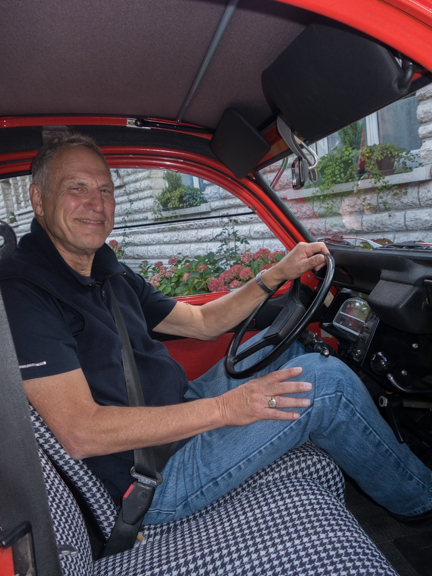
I fit, but barely. The seats are adjustable by unbolting them from the floor and bolting them back into the position you want.
Over the years I’ve taken many photos of 2Cv’s because – for whatever reason – I love them. They represent a France that doesn’t exist anymore, and they represent a style of car that isn’t built anymore. They are ungainly, quirky, funny-looking in this day of sleek cars, but they are honest, authentic automobiles – classics. If we were to move here, I’d have one in a minute!
Many thanks to Helen, here with Laurie, for sharing her ride with me. I’ll have a different perspective on every Deuche I see now.
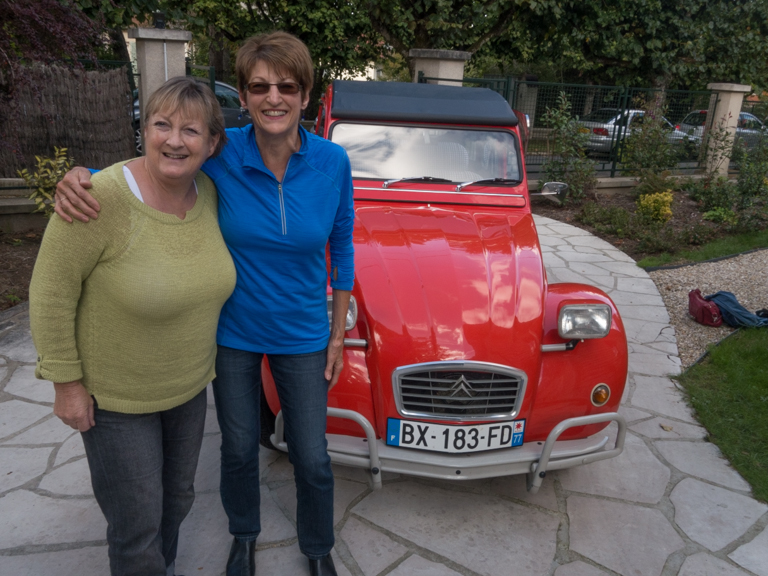
Helen, the 2CV’s proud owner, and Laurie, celebrating a successful drive (meaning we returned in one piece even though I drove).

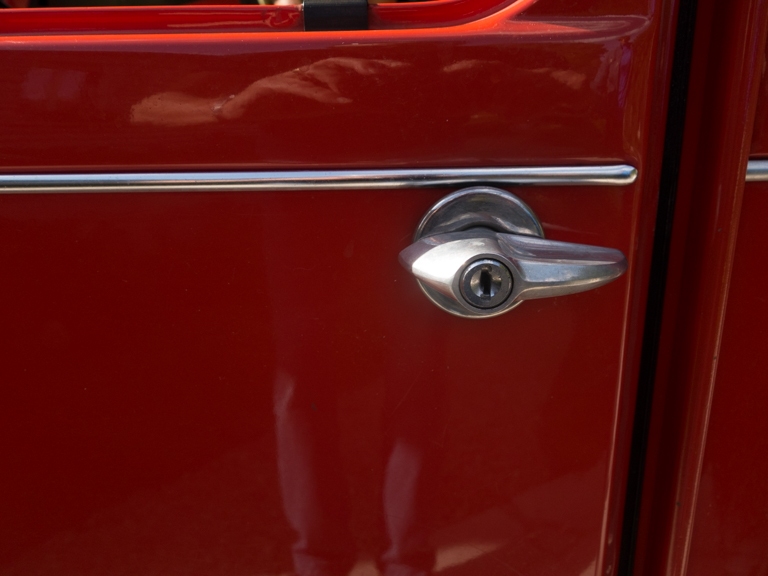
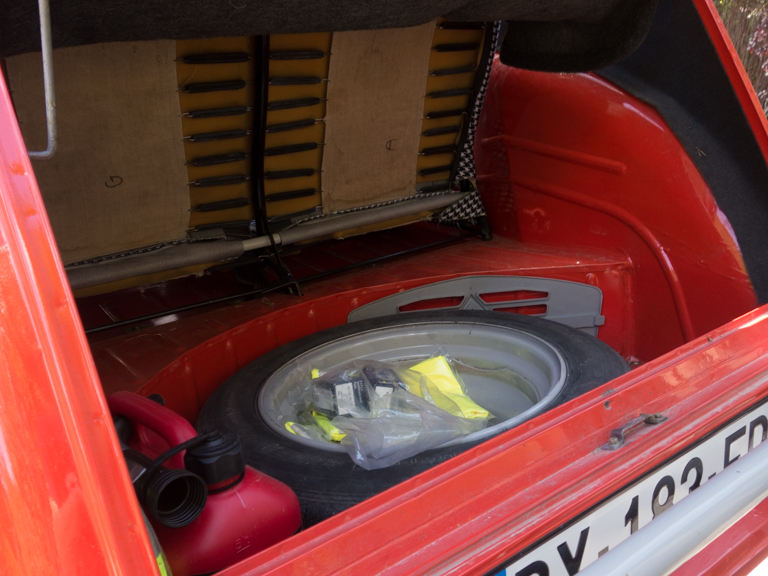
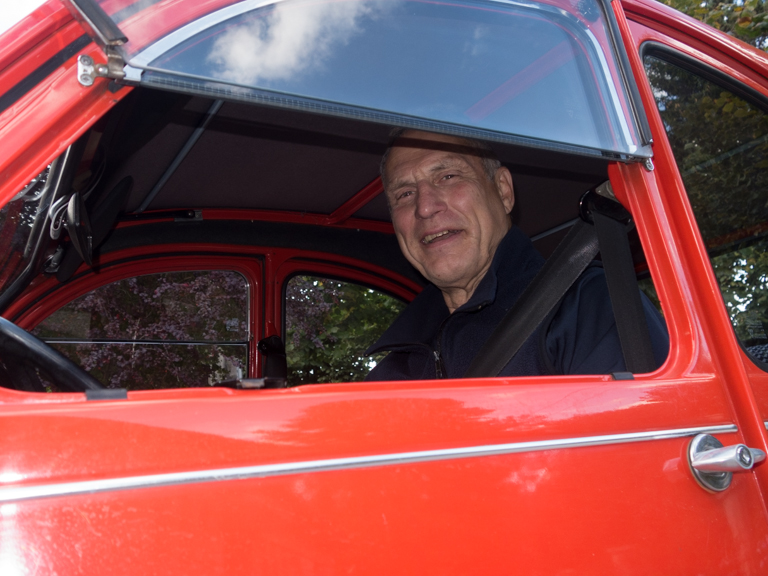
It wasn’t so much fun 30 years ago when you would be stuck behind a 2 CV going uphill!